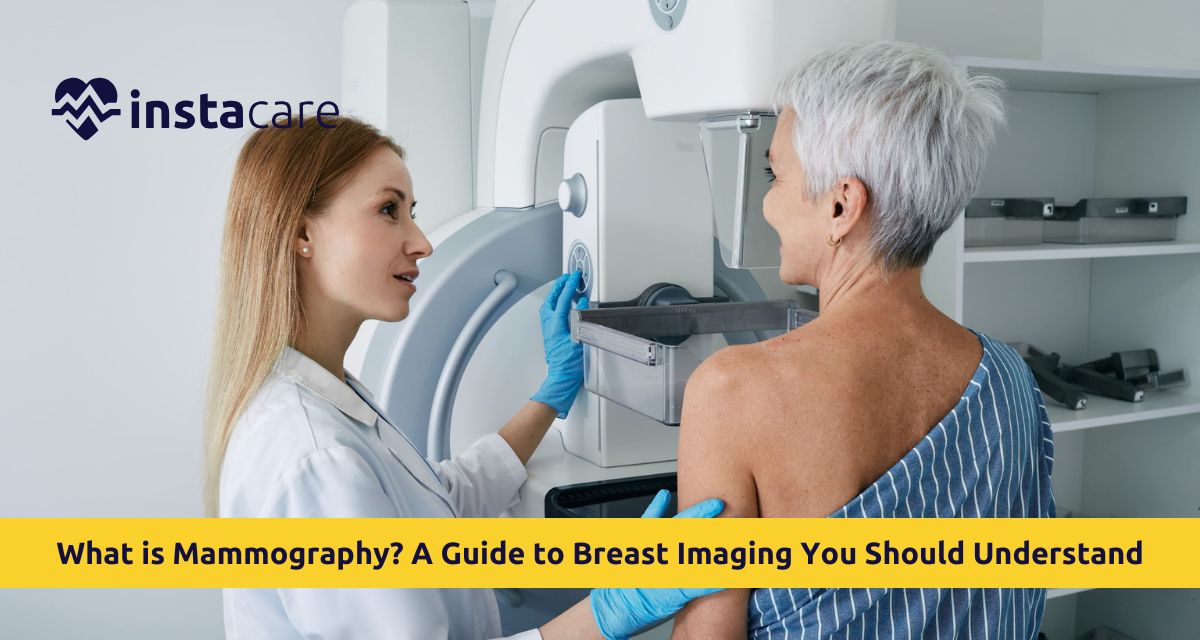If you need a mammogram due to symptoms or just regular check-ups, knowing what's involved helps, alongside pros, cons, and recommendations. This overview includes info on dense breast imaging, how to get ready, expenses, so choices can be clearer.
What is Mammography?
Mammography uses X-rays to create clear pictures of breast tissue. While mainly serving early detection of cancer, it helps specialists spot growths, fluid-filled sacs, or mineral deposits missed during manual exams. Because subtle changes are visible earlier, this method supports timely evaluation by medical experts.
Modern tech covers digital mammography, storing pictures by electronic means, as well as 3D versions, called tomosynthesis, creating thin slices of breast layers for clearer views. Such progress boosts precision while lowering how often follow-up scans are needed.
Why Mammography Is Important?
Mammography matters since it finds breast cancer screening early, which boosts chances of successful treatment. Routine checks spot growths before signs appear, making treatments simpler. Women who have relatives with
breast cancer, thick breast tissue, or past issues in their breasts gain the greatest advantage from regular scans. Research indicates spotting problems early via these scans can boost chances of survival by nearly 30%; this is why they play a key role in staying healthy.
Types of Mammography
Various kinds of mammograms suit different requirements:
- Screening mammography: Regular X-ray checks for women without symptoms help find breast cancer early.
- Diagnostic mammogram: Diagnostic mammograms help check unusual changes, offering close analysis if something seems wrong.
- Digital mammography turns X-rays into electronic pictures, this boosts precision while simplifying data saving.
- 3D mammography (tomosynthesis) creates several slice-like views; particularly helpful when breast tissue is thick. It captures layers of images, ideal for spotting details in dense areas.
Every kind has its own role; therefore, your physician will suggest the best option depending on your medical background.
How Mammography Works?
While having a mammography procedure, the breast gets pressed by two panels to flatten tissue so images show details clearly. With low-level X-rays, the internal layout appears, pointing out possible abnormalities.
- Screening mammography is a brief process used during regular check-ups; it generally lasts around 15 to 20 minutes.
- Diagnostic mammography might use extra images or zoomed shots to check unusual spots.
- Images get reviewed by radiologists spotting tiny calcium deposits, unusual growths, or uneven areas, signs pointing to possible early cancer.
Read More: EMG Test (Electromyography): Procedure, Uses, Results & More
Who Should Get a Mammogram?
Mammography guidelines are advised for women depending on age, also risk level plus past health issues
- Women from 40 to 74 are advised to get regular breast imaging checks every one or two years.
- People at higher risk, like those with relatives who had breast cancer, might require screenings sooner or more often.
- Folks who have thick breast tissue get better results using modern 3D scans instead of standard ones, this method spots issues more clearly due to clearer imaging layers known as mammography for dense breasts.
- Some men at greater risk for breast cancer might need scans, even though this is uncommon.
What to Expect During a Mammogram?
While having a mammogram, you'll:
- Take off your top clothes, then put on a hospital robe.
- Face the mammogram device while the tech arranges your breast.
- Feel light pressure that smooths tissue for better imaging, slightly awkward yet fast.
- Do the same for every breast, usually from several views.
Following the scan, a specialist reviews the pictures, then forwards findings to your physician.
Benefits of Mammography
Mammography benefits and risks provides numerous advantages:
- Detects breast cancer sooner, boosting chances for effective care.
- A simple, fast method, also gentle on the body.
- May show additional breast concerns like cysts or noncancerous lumps.
- Provides direction on avoiding issues while supporting ongoing treatment.
- Lowers death rates through timely care, early action makes a difference.
Spotting issues early matters most for women who have dense breast tissue, since standard tests might overlook problems there.
Limitations and Risks of Mammography
Although mammography works well and carries low risk, certain drawbacks remain, yet these should not be overlooked despite its benefits
- Minor tumours might go unnoticed, particularly within thick breast tissue, due to limited visibility.
- Incorrect results can cause undue stress or additional check-ups.
- Being exposed to small amounts of radiation matters, even if levels are low.
- Some people feel mild pain when breasts are pressed.
Balancing risks against advantages, mammography still stands as the top method for detecting breast cancer, particularly when paired with physical check-ups.
How to Prepare for a Mammogram?
Getting ready makes outcomes more reliable because it reduces errors
- Avoid deodorant, powder, or lotion that day, these can show up on X-ray images.
- Schedule tests when to get a mammogram your breasts feel most comfortable, typically about a week past your period ends.
- Choose separate top and bottom pieces, it's easier to mix or change them when needed.
- If possible, bring earlier mammogram pictures, to help with contrast.
- Tell the technician if you have implants, are pregnant, or nursing.
Doing these steps boosts ease while making the scan clearer.
Conclusion
Mammography plays an essential role in checking breast health and spotting cancer early. Whether it's standard imaging or newer 3D methods, the process is both secure and useful. Early identification leads to quicker care while reducing uncertainty. Knowing what to expect, alongside potential advantages and concerns, helps patients make clearer choices. For individuals with higher chances of developing issues, or those with denser tissue, routine scans may extend lives. Visit best labs for mammography test to ensure quality screening.
Book lab tests from the
best-certified labs in Lahore, Karachi, Islamabad, and all major cities of Pakistan through
InstaCare, and get a discount of up to 35%. For assistance, call our helpline at 03171777509 to find the right lab test for your health needs.

